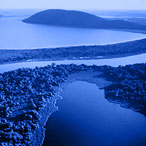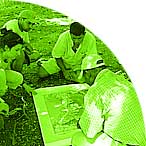The concept of protecting natural habitats stretches back almost to prehistory. As natural systems came under intense pressure during the 20th century, there was a rapid demand for parks as a tool for conserving ecological balance. By the time of the 5th World Parks Congress in 2003, 11.4 per cent of the world’s land surface was in a protected area recognised by IUCN The World Conservation Union. This almost certainly represents the largest conscious change in land-use in human history and an unprecedented commitment to conservation.
Although the growth in number and size of protected areas is spectacular, protected area systems do not yet come near to representing the long-term needs of species, ecosystems, and the people who depend on them, nor fulfilling global biodiversity commitments. Protected area gaps must be identified, prioritized and filled. This first section of the web-guide explains why biodiversity is still under-protected and why a gap analysis is critical to address the problem.
To download a pdf of the complete gaps guide, go to the "resources" section of this site and look under "tools"



















